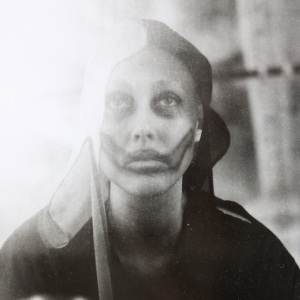Bianca Casady & The C.i.A @ The Southbank Centre (David Byrne’s Meltdown Festival) Review
This year, legendary artist David Bryne is curating Meltdown. He cued his intentions to showcase experiment and the most avant-garde aspects of contemporary culture by appointing one of the first slots to Bianca Casady and the C.I.A.
Fans of CocoRosie will recognise Bianca as one of the two frontwomen of the experimental (and rather baroque) folk band. In the early 2000’s, CocoRosie arose as the dark antimatter to the new Nu-Folk movement then gaining popularity. While Joanna Newsome sang rhapsodically about peaches and milk-eyed manders, Bianca and her sister croaked out tunes about stillborns and the Armageddon. It was as if Shakespeare’s Weird Sisters had suddenly been given a record deal. Bianca’s solo work bears extremely strong ties to this back-catalogue; the visual references, sound aesthetic and themes mark an advancement of the ideas CocoRosie stood for, rather than a charge into new terrain.
The performance is extremely esoteric. Indeed, it was reputedly inspired by a 100 year old, un-tuneable piano. The multimedia structure builds on this overall sense; it’s as if the show has been patched together from strange relics discovered in the attics of history. Opening with a video installation of a runaway clown, we’re then presented with live dance, orchestral performances, jazz, cabaret and a series of eerie stills: a supernatural variety show. This mishmash of sequences sacrifices overall coherence in preference for a more free-flowing range of impressions. In this way, the show demands as much as it gives, rather than articulating a complete vision, it requires the audience to imaginatively supplement what they see, fill it with their own fantasies. Bianca, who is famed for using children’s toys as instruments, masterfully banks on the power of association, using a variety of objects such as rattling chains and typewriters for their suggestive power; a provocateur as much as a musician.
While the segments jerk around unpredictably, the tone remains consistently spooky. A technique of reappropriation is used throughout, whether of genres, cultural references, or even gender roles (at one point we see a male clown perform an almost pornographic pole dance). In this way, we have a constant of the uncanny, navigating images that seem familiar and inexplicably other. It is strongly redolent of other contemporary artists, such as Arca, who use eerie forms to explore the unsettling fluidity of our concepts of beauty and gender.
As you can probably gauge, this is a bold and macabre performance. It is populated with images of cartwheeling clowns streaked with blood, stranded kittens on lonely country roads and other suggestive horrors. Yet there is a tender, shyness that seems to underpin it all. Bianca’s trademark croakiness often muffles and disguises the words she sings, frequently she performs with her back to the audience. The show in a constant skirmish confrontation and retreat; indeed, Biño Sauitzvy practically flees the stage after many of his dances.
One gets the impression that audience and performers are meeting across a gulf; that these outsiders are as intimidated by the normal spectators as we are of them and we meet these eerie creatures and otherworldly beings with a sense of mutual apprehension. 3/5
Review written by Sean Gilbert.



Leave a Comment